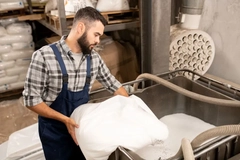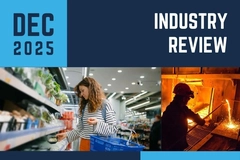KHS presents latest technology features for greater planning security

26 Jul 2024 --- The KHS Group is expanding its virtual 3D line design software. Various new features teach customers about their systems holistically.
Possible sources of error are touted to be reduced to a minimum and results are reached in real-time: during one meeting, users can see how their future line can be integrated into the production environment.
After introducing 3D line design to the offer phase two years ago, the Dortmund systems provider has expanded the software allowing it to now include a new generation of mobile laser scanners and technically optimized VR goggles.
“With this, we enable beverage producers to enjoy a holistic, detailed 3D experience within a very short time indeed, thus simplifying project planning and greatly improving planning security,” says Patrick Bürger, head of Plant Design at KHS.
 Patrick Bürger, head of Plant Design at KHS.Mobile laser scanner
Patrick Bürger, head of Plant Design at KHS.Mobile laser scanner
Laser scanning enables the precise survey and recording of all interfering contours in the production shop.
The scanner logs all possible obstacles in minute detail. “If all the customer has are 2D drawings that are 20 to 30 years old and often incomplete, this can lead to several unpleasant surprises. During the order phase or, in the worst case, at the last minute during commissioning, ventilation systems, columns or other obstructions may suddenly appear that hamper the ingress of our lines and machines,” says Bürger.
KHS says it eliminates the source of error at the initial planning stage through the 3D laser scanners.
Up until recently, KHS used stationary laser scanners mounted on a tripod in the 3D line design process. To record the space available in the entire hall, the scanners had to be moved and readjusted after each separate image had been taken.
The new generation of laser scanners “considerably” simplifies and speeds up this process.
“You simply hold the scanner in your hand, like a smartphone with a camera and video function. As you move around the hall, the scanner takes 270° pictures of your surroundings. On-site, we now only need about 20% of the time we used to for image capture plus post-processing,” Bürger states. “The result is a scatterplot that gives the exact data for the room.”
VR technology
Meanwhile, KHS added working with tracking incorporated into goggles.
“We only need the goggles, two joysticks and a laptop to display the data. This means that the setup is much simpler and available much more quickly,” says Bürger.  Any type of modeled KHS line can be projected onto the VR goggles — enabling direct integration into the scatter plot from a laser scan.
Any type of modeled KHS line can be projected onto the VR goggles — enabling direct integration into the scatter plot from a laser scan.
He explains that the same applies to converting the data recorded by the scanner to a VR-compatible format. “With the improved system, data processing now only takes a few minutes, whereas in the past several weeks were needed.”
Therefore, any type of modeled KHS line can be quickly projected onto the VR goggles — enabling direct integration into the scatter plot from a laser scan. This has a major benefit, explains Bürger: “We can let our customers experience virtually what their potential new line or machine will actually look like and how it will fit into the existing space on site early on in the planning process.”
This boosts planning security and builds up trust, according to the company.
The synergy of mobile laser scanners and VR goggles with integrated tracking is new to the industry, asserts Bürger.
“To date, we’re one of the few companies on the market to directly combine the scan with 3D planning and incorporate this into customer presentations right from the start.” This service has already been put to successful use for a number of clients in the German-speaking parts of the world. “
“By the end of the year, we’re aiming to implement this worldwide so that beverage producers can profit from the benefits in real-time also at all of our international sites.”










